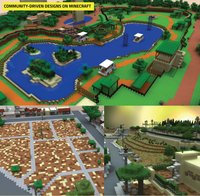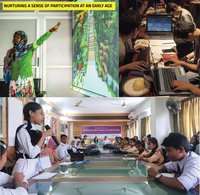Minecraft x Youth Engagement
Children and youth have the potential to act as accumulators and distributors of knowledge in a way that other age cohorts cannot. Participatory planning processes designed to capture this potential and engage youth and children in community decision making not only orient the planning outcomes towards the actual needs and interest of the community, but also foster civic-minded future leaders by giving them an opportunity to practice democracy.
While traditional existing youth engagement frameworks are designed to deconstruct the adult-centric perceptions of youth as vulnerable to manipulation or lacking the capacity to make meaningful contributions, in most cases, they remain a particularly narrow interpretation that excludes youth from disadvantaged communities. They are limited by barriers, defined by stubborn patterns of racial and economic inequality, that manifest as extra-individual social and linguistic barriers such as cultural background, linguistic preference, gender-based duties, peer pressure, and level of education. With the lack of specialized tools that are particularly aimed at driving youth participation, the impacts of these impediments for youth from minority communities are heavily felt in plans and policies that are tokenistic representations of child and youth interest. Games, on the other hand, have potential to facilitate participation that is void of these barriers.
“Minecraft x Youth Engagement'' intends to demonstrate the potential of Minecraft, a 3D build-and-play video game that allows players a latitude for control without setting specific goals, to capture the interest of youth—especially from minority communities—in urban decision making. This collaborative project with Pratt faculty and students and the Participatory Budgeting Youth Fellowship at Coro New York Leadership Center will contextualize a game-based methodology in the process of participatory budgeting in New York City to operationalize funded capital projects.The resulting methodology is envisioned as a guide that can be purposed by any school or community-based organization that is working to achieve qualitative youth engagement regarding urban design projects.

